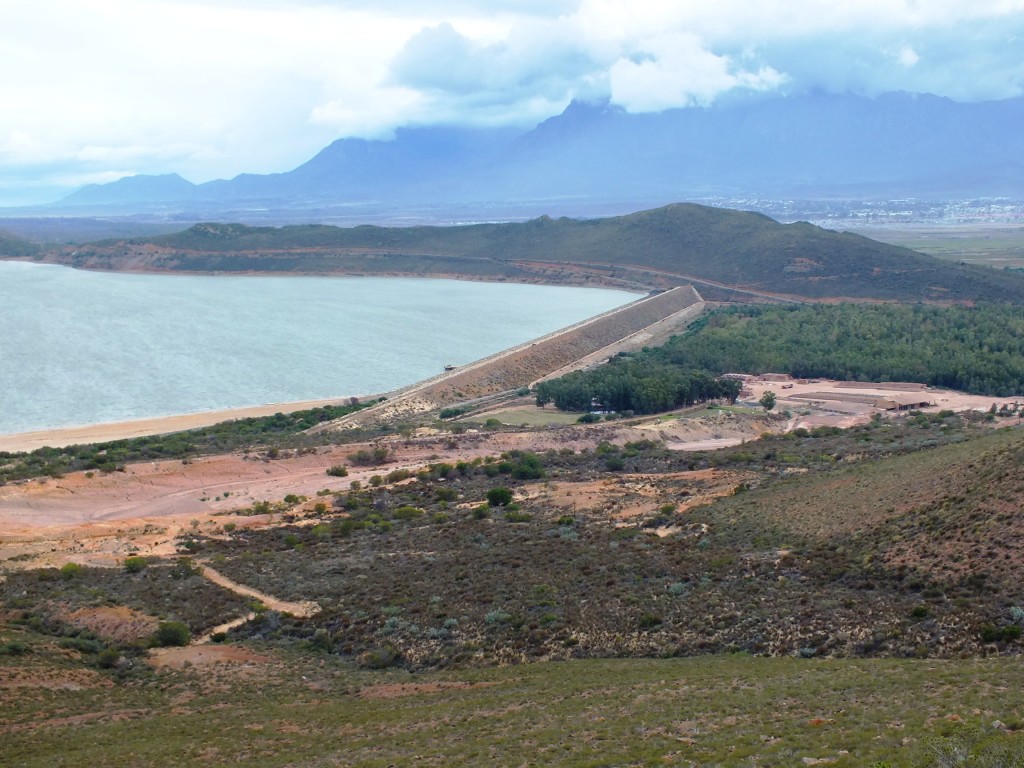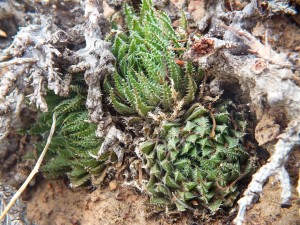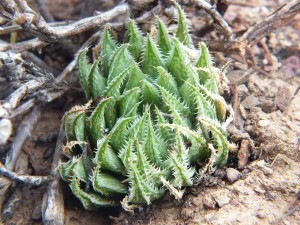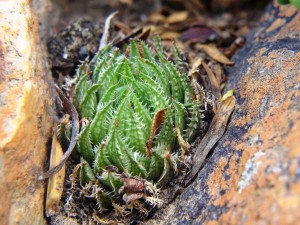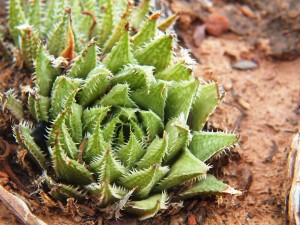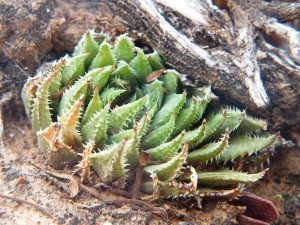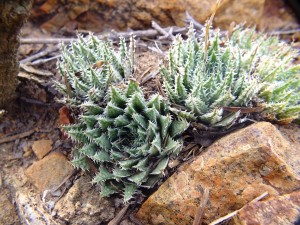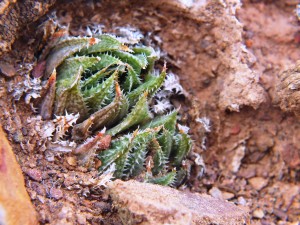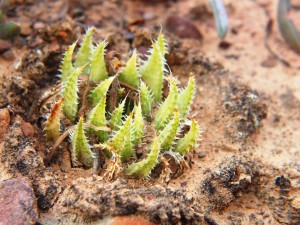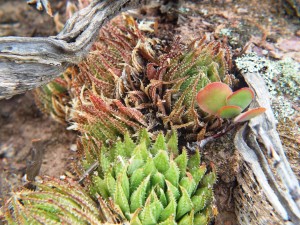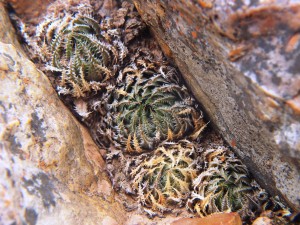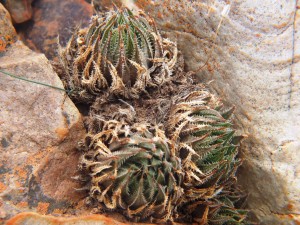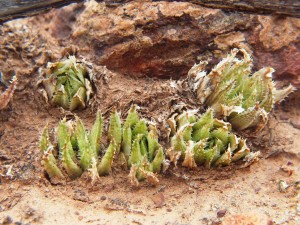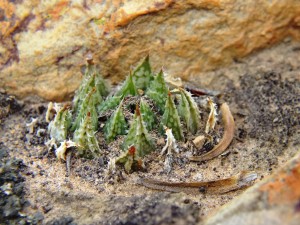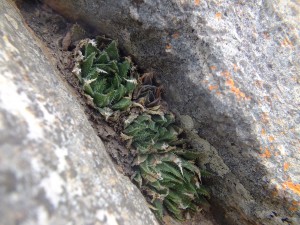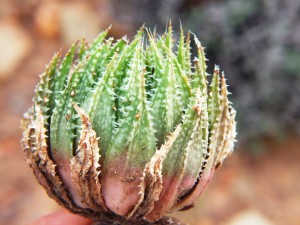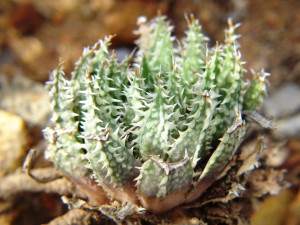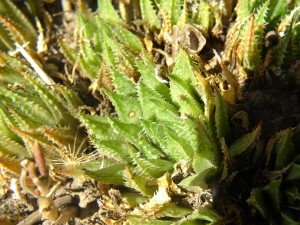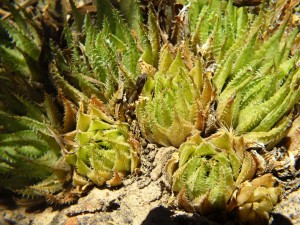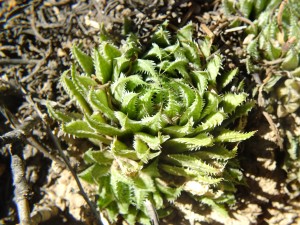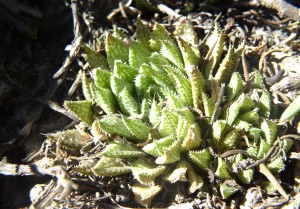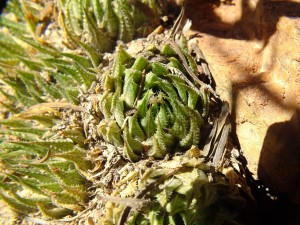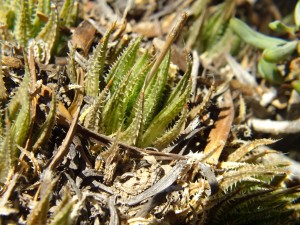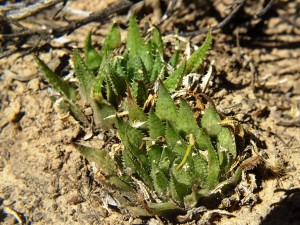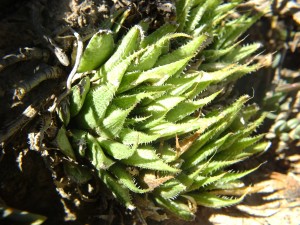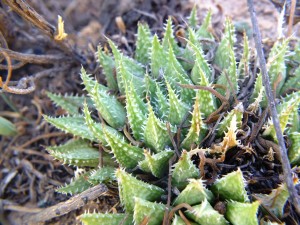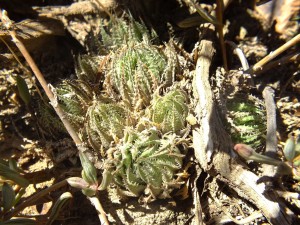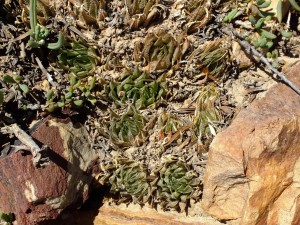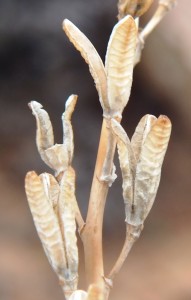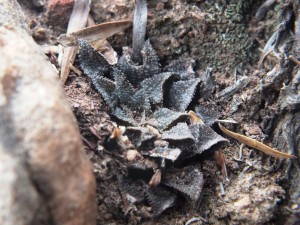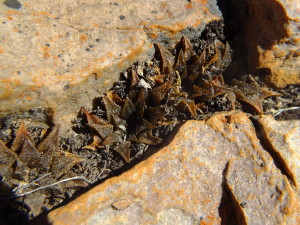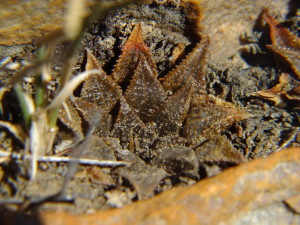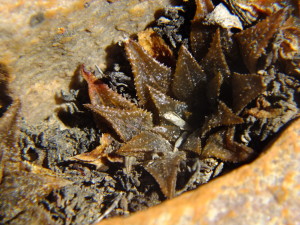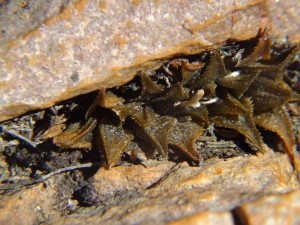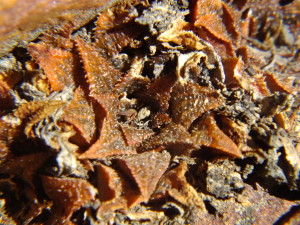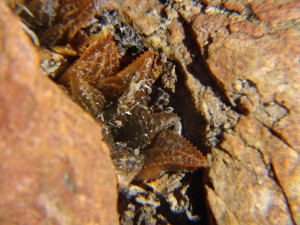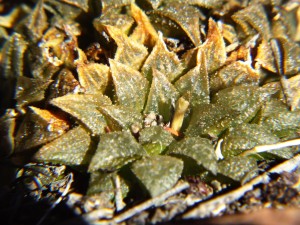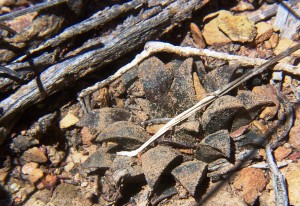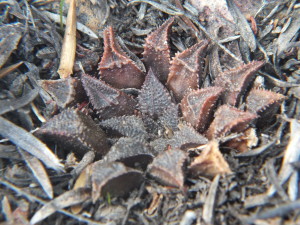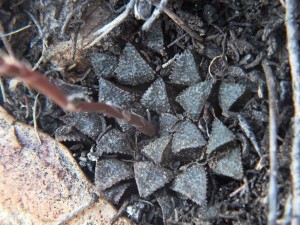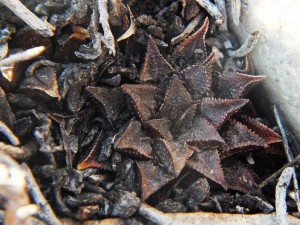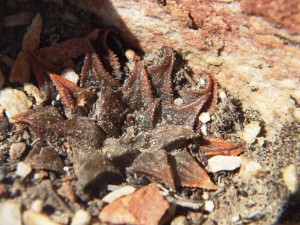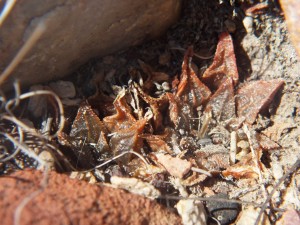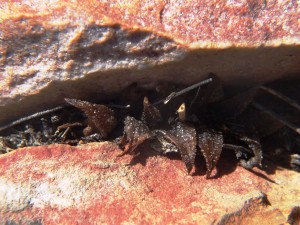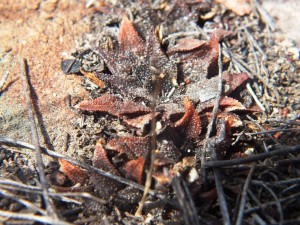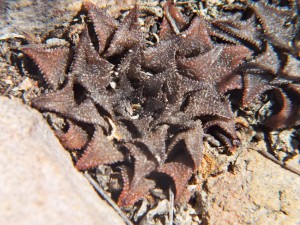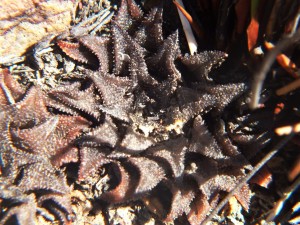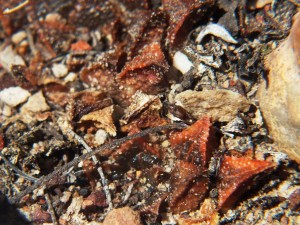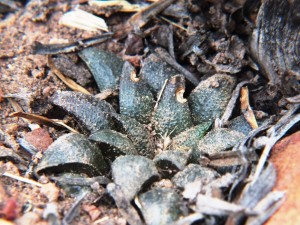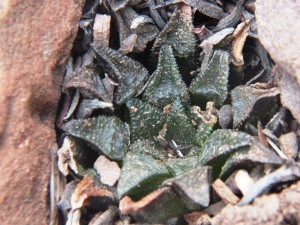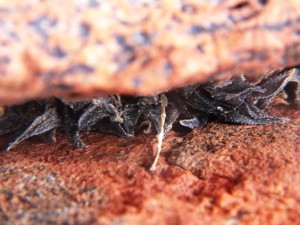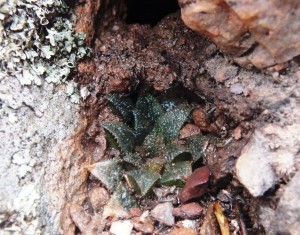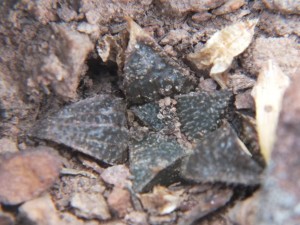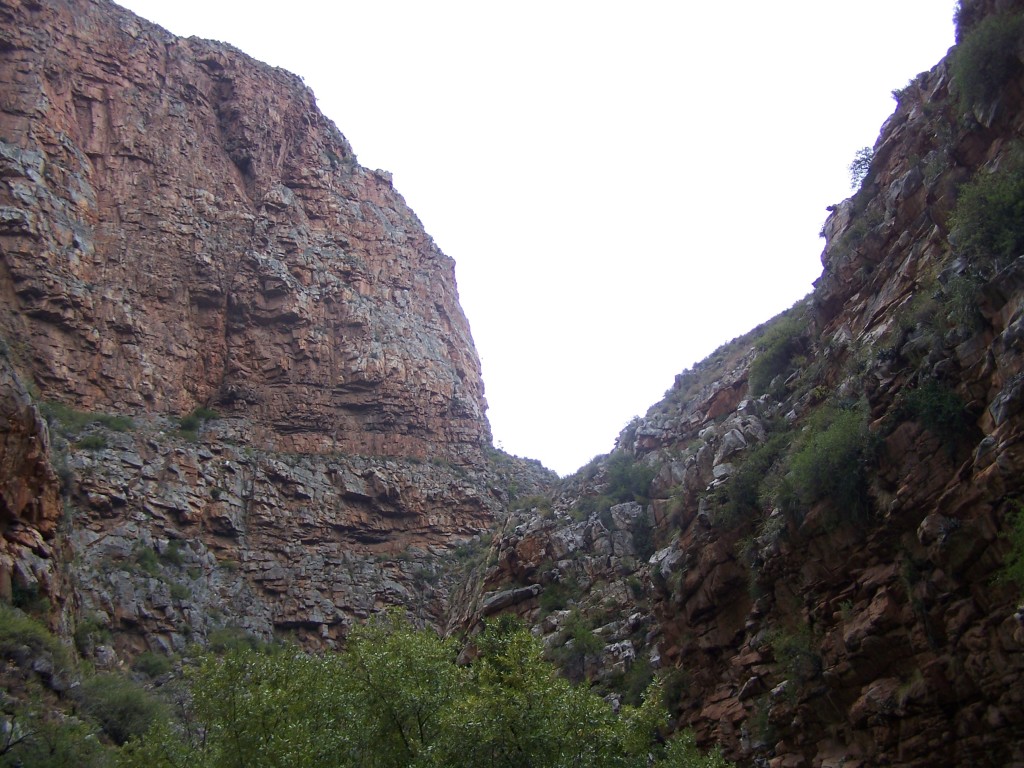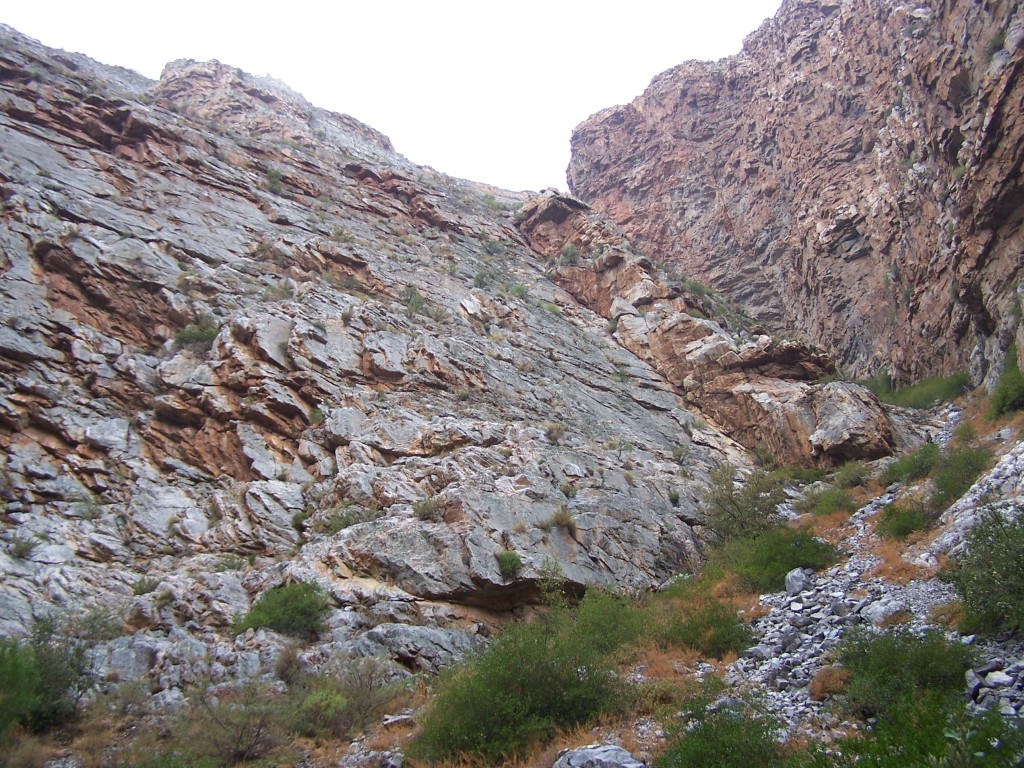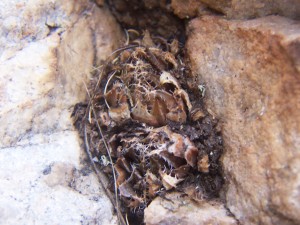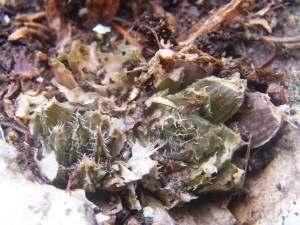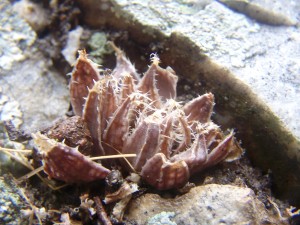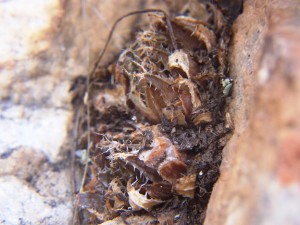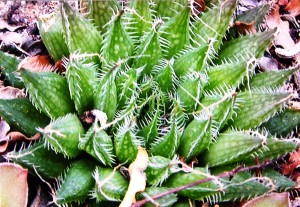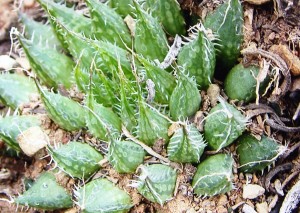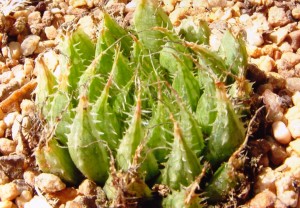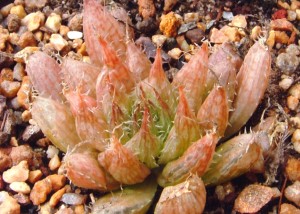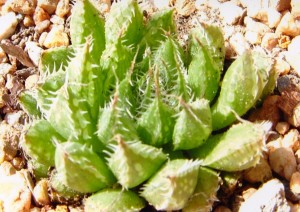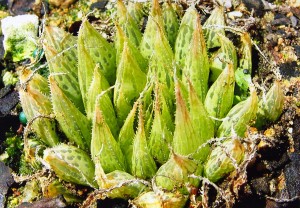Set 10. Map point 18. H. herbacea ‘submaculata’. Brickfield, Brandvlei Dam.
Figs. 10.1 to 10.20 MBB7995 H. herbacea, S Brandvlei Brickfield.
Figs. 10.21 to 10.53 MBB7996 H. herbacea, E Brandvlei Brickfield.
I have associated this locality with vonPoellnitz H. submaculata and treated it as a synonym of H. herbacea. However, here I first illustrate a population about 600m south of that where the plants are in the usual size range for the species ie.30-40mm diam. At the locality east of the Brickfield and next to the Breede River, the plants are 1/3 to 1/2 as large again and can form huge clumps. North-west from this is a population of H. maculata at the extreme end of Die Nekkies and only about 300m distant, and this population I have always regarded as somewhat intermediate. What is interesting to note is the huge variation in leaf shape and armature within each population. In both cases the plants are in Witteberg Sandstones and at the first site this is both in a very shale-like stratum as well as in a highly quartzitic one. This is unusual for H. herbacea. Both populations wedge in geographically between H. maculata populations and in no known case do both occur.
Set 11. Map point 19. H. mirabilis. Droogerivierberg.
Figs. 11.1 to 11.11 MBB7984 H. mriabilis, Droogerivierberg.
Figs. 11.12 to 11.24 MBB7985 H. mirabilis, Sandberg S.
Figs. 11.25 to 11.31 MBB7988 H. mirabilis, Trappieskraalkloof.
In this area H. herbacea is common in the Dwyka Tillite but not in the Witteberg Sandstone. But instead of H. maculata, H. mirabilis is present there and commonly so. Where at one time I considered that H. pubescens was very probably an extension of H. mirabilis to a western and northern limit, this does not seem to be the case as it is so closely linked to H. maculata and H. herbacea. On the other hand I have wondered about the similarity of the Moddergat H. maculata to H. mirabilis. H. mirabilis is in the eastern areas of the Ouhangsberg and now we know that H. maculata occurs not far away on the western slopes. The centre area remains unexplored and this needs to be done as it may also help understand the idea of two principle role players viz. H. retusa and H. mirabilis as precursors of a very complex Southern Cape assemblage.
Set 12. Map points 20. Unknowns.
Figs. 12.1 to 12.7 MBB7865 H. cf. arachnoidea. Keurkloof, SE Dedoorns.
Figs. 12.9 to 12.15 EA1441 unknown, Hex Pass.
I have only two sets of pictures for this set. These are…(a) MBB7865 that Ernst van Jaarsveld drew to my attention at Keurkloof, south east of De Doorns in the Hex River Valley. There is a continuum of suitable habitat between there and Sandhills/Kanetvlei; (b) EA1441 and this number may be incorrect, but it is at the near-base of the Hex River Pass still further east than Keurkloof. In between is Osplaas Station where there are dramatic forms of H. arachnoidea with very spotted leaves, not to forget the nortieri-like form of H. arachnoidea at Kanetvlei about 200m north of MBB7994 H. maculata.
Conclusion:
The nature of the populations of H. maculata on Die Nekkies varies quite considerably in that there is an area east of the Resort where the plants form huge clumps. Individual rosettes can be quite large. But there are also points where the plants tend to be solitary, hidden in rock cracks or even truncated into the soil. The plants in the Southern populations are smaller and tend to be solitary. There may be differences in flowers and flowering time but this will really be significant in relation to H. mirabilis rather than between the populations recorded here or to H. herbacea. Attention must be paid to the way in which H. herbacea is geographically wedged in between populations of H. maculata. Equally significant is the character of H. pubescens southwest of Sandberg (Dewetsberg) where the plants have less spinuliferous leaf surfaces and also spotting (maculation). This is one of the best pieces of evidence I have for the geographic continuities that exist throughout the genus both in respect of species of how I think species can be recognized and of how difficult decision making is. In essence this report only dismisses the idea that the Lemoenpoort population can be assigned to H. pubescens. I doubt if it is rational to even formally recognize it as different to H. maculata as “variety” itself is a mythical status. Fragmentation by names is a rather archaic approach to classification that serves hardly anything but a semi-commercial need.
Acknowledgement:
Many people contributed in one way or another to this report…Mr Hentie deWet of Moddergat, Messrs Poffie and Hettie Conradie of Sandberg (South), Mr Pieter Naude of Vreesnicht, Mr Johan and Marie Fourie of Buitenstekloof, Mr Nico Marais of Worcester (Brandvlei) Brickfield Mr A. Groenewald of Cilmor Cellar and Stefan Hugo of River Farm. Messrs PD and Anso leRoux provided much logistic support, interest and company as did Kobus Venter, Etwin Aslander and Werner Voigt. Lawrence Loucka has managed and facilitated the archiving of publications and pictures.

